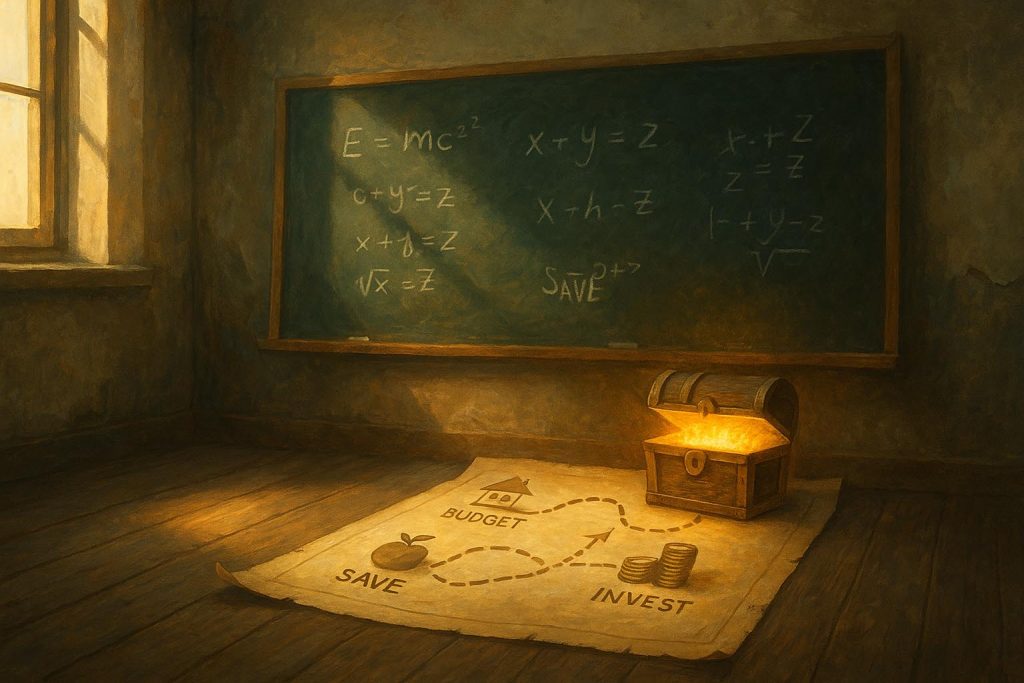In this blog, I summarize Leil Lowndes’s “How to Talk to Anyone: 92 Little Tricks for Big Success in Relationships” and share some insights and reflections that will highlight the lessons you need to get the most out of it.
How To Talk To Anyone Summary
Nowadays, digital communication often overshadows face-to-face interactions, and mastering the art of conversation has become an invaluable skill. I have to admit that I don’t naturally like conversations, being that I’m an introvert who often works from home. But after years of running a service business, Block Ten Strategy, I find how helpful being a conversationalist can be for work. That’s also true with many life aspects, as you also need to learn how to strike up good conversations with your significant other, kids, good friends, and acquaintances.
“How to Talk to Anyone” has garnered attention for its practical advice and easy-to-apply tips. It serves as a guide for those looking to improve their conversational abilities. This book is not just about small talk; it delves into the nuances of communication, offering insights into how to make lasting impressions, build meaningful relationships, and navigate the complexities of human interaction.
About the Author

The mastermind behind “How to Talk to Anyone” is Leil Lowndes, an internationally recognized communication expert, speaker, and author. Lowndes draws heavily rom her extensive background in psychology and her hands-on experience in various communication-related fields. As a person who enjoys understanding how the science and art of something brings the best out of us, she’s definitely a resource that I would enjoy. If you’re the same, you’ll love the same experience with her work.
Her writing is informed by her professional experiences and personal journey of transforming from a shy individual to a confident communicator. Lowndes’s work resonates with readers from all walks of life, making her advice both accessible and universally applicable.
How to Talk to Anyone Chapters & Summaries
Below are the chapter titles from “How to Talk to Anyone,” with brief synopses for each:
- Introduction — What this book is all about and what I hope to help you achieve: This chapter sets the stage for the book, outlining its purpose to empower readers with the skills to become authoritative communicators in any setting.
- My First Job Was at McDonald’s — The author shares personal anecdotes to illustrate the journey from modest beginnings to becoming a successful communicator, emphasizing resilience and the willingness to learn.
- What is an Authority? — Defining what being an authority in your field or industry is and why you should strive to become one: This section explains the concept of authority, detailing its importance in gaining respect and influence within your professional and personal circles.
- An Authority Mindset — Much like anything that brings success, being an authority starts with the mindset: The author discusses the psychological shift required to position oneself as an authority, focusing on self-perception and the perception of others.
- Influencers and Experts — What some of today’s most successful influencers and experts have in common: Insights into the traits and habits that successful influencers and experts share, offering readers models to emulate.
- The Elements of Influence — How to Build Digital Influence: This is a guide to leveraging digital platforms to build a personal or brand’s influence, with strategies for engagement and content creation.
- The Elements of Expertise — What separates the experts from the wannabes: Clarifies the distinction between true expertise and mere pretension, with advice on developing and demonstrating genuine knowledge and skills.
- The Downfall — What makes people crash and burn in PR and how you can avoid those mistakes: This chapter identifies common pitfalls in public relations efforts and provides guidance on how to navigate or avoid them entirely.
- How to Become an Authority — The proven formula of becoming an Authority through public relations: Offers a step-by-step strategy for establishing oneself as an authority figure through effective PR and marketing techniques.
- Nurturing Your Peers and Followers — How to effectively create ways to nurture followers and exponentially grow your fan base: Tips for building and maintaining a loyal following, with an emphasis on engagement and community building.
- Monetizing Authority — Turning your established authority into a money-making machine: Discusses various avenues for monetizing one’s authority and influence, from speaking engagements to product endorsements.
- Maintaining and Expanding Your Authority — Because it never ends with just starting strong. You need to build and become stronger through time: Advice on sustaining and growing your authority over time, with a focus on continuous improvement and adaptation.
- Time for Action — The concrete and easily doable steps you need to take to become an Authority: Concludes the book with actionable steps readers can take immediately to start building their authority, emphasizing the importance of taking consistent action.
What I like about “How to Talk to Anyone” from a literary standpoint is how Leil structured the whole book’s chapters. Each chapter builds upon the last, creating a comprehensive guide for readers looking to enhance their communication skills and establish themselves as authoritative figures in their respective fields.
Unlock Key Book Insights in 15 Minutes with Sumizeit
Get essential lessons, insights, and strategies with bite-sized book summaries. Sumizeit helps you save time and stay ahead with expert-curated summaries from top business books.
Sign up today and start learning in just 15 minutes a day!
Key Ideas from the Book
Here are some key ideas you shouldn’t miss when you read “How to Talk to Anyone” (and some you should know if you don’t read the whole thing):
Idea 1: Your Introductions Greatly Affect Your Conversations
One of the key takeaways from Lowndes’s book is the importance of smooth introductions. First impressions are crucial, and the way you introduce yourself can set the tone for the entire conversation. Lowndes emphasizes the need for openness, a warm smile, and a firm handshake. In the realm of marketing and sales, this initial interaction can make or break a potential client relationship. A smooth introduction not only paves the way for a positive first impression but also opens the door to a more engaging and fruitful conversation.
Idea 2: Mimicry and Companionship Connect the Best
Lowndes suggests that subtly mimicking the body language, speech patterns, and energy levels of your conversation partner can create a sense of companionship and understanding. This doesn’t mean imitating them in a mocking way but rather aligning with their communication style to foster a deeper connection. In a sales context, this technique can be particularly effective, as it helps build rapport with clients, making them feel more at ease and understood during discussions.
Idea 3: Specificity in Your Praises and the Power Behind It
Generic compliments often fall flat. Lowndes advises that as you get to know someone, your praise should become more specific and personalized. This shows that you are paying attention and value the person’s unique qualities or achievements. For marketing consultants and agency owners, this principle can be applied in client communications and team management, where specific praise can significantly boost morale and strengthen professional relationships.
Idea 4: Listening Is Just as Important as Speaking
A common misconception in conversation is the overemphasis on speaking. Lowndes highlights the importance of active listening, showing genuine interest in what the other person has to say, and responding thoughtfully. This approach not only makes the other person feel valued but also provides you with valuable insights into their needs and preferences—critical information for anyone in a client-facing role.
Idea 5: The Power of Silence
Lowndes also touches on the strategic use of silence in conversations. Sometimes, pausing before responding or asking a question can give you additional time to think and can make your words carry more weight. Silence can also encourage the other person to open up more, providing deeper insights into their thoughts and feelings. In negotiations or when dealing with challenging client scenarios, the effective use of silence can be a powerful tool.
More Summaries to Read Next
- Who Moved My Cheese Summary, Key Takeaways, and Reflections
- Leaders Eat Last Summary: Get the Gist in 5 Minutes
- The 5 AM Club: Summary, Takeaways, and Author
Personal Reflections
Reflecting on “How to Talk to Anyone,” I find its lessons not only relevant but transformative, especially in the context of marketing and sales. As a marketing consultant and agency owner, the ability to forge strong connections with clients and partners is indispensable. This book has offered me new perspectives on how to enhance these interactions, making each conversation not just a transaction but a step toward building lasting relationships.
The specific examples and actionable tips provided by Lowndes have been particularly beneficial, allowing me to apply these lessons directly to my professional life. Whether it’s through a more thoughtful approach to introductions, a greater emphasis on listening, or the strategic use of silence, I’ve seen noticeable improvements in my interactions. “How to Talk to Anyone” has been a valuable addition to my communication toolkit, reinforcing the idea that effective communication is at the heart of successful marketing and client relations.






